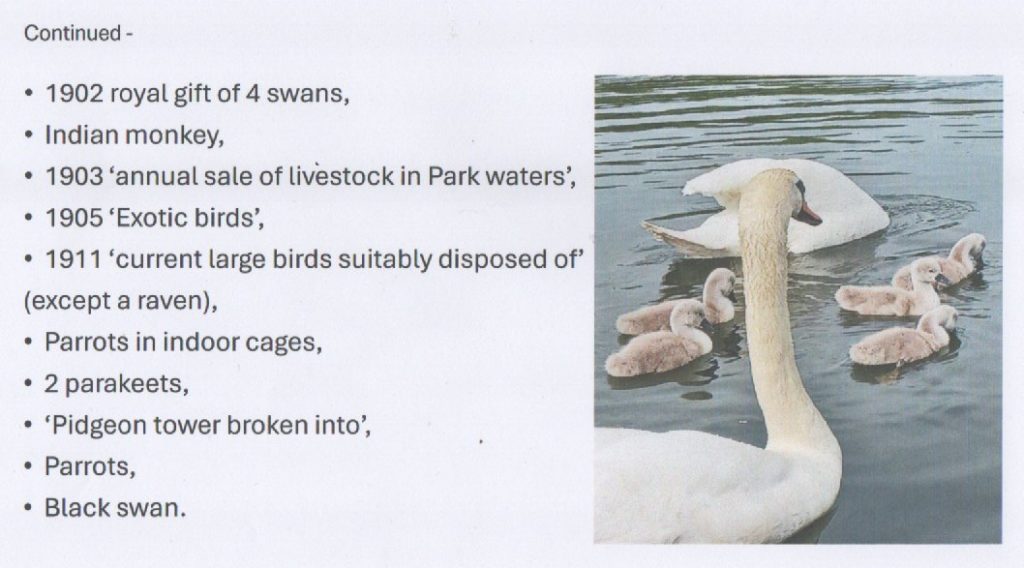
A further list of some of the plants, animals and birds donated to Pearson Park between 1880 and 1914, evidence from the minutes of the Burial and Parks committee viewed at Hull History Centre. The royal gift of four swans, 1902, was a standard gift to the municipal parks around the country to celebrate the coronation of Edward VI in that year. It is a recognition of the significance that municipal parks had nationally by the early 20th century.
In 1903 the ‘annual sale of livestock in park waters’ is evidence that by that time the parks’ lakes in Hull (1903 Pearson, East and West) were home to many waterfowl of various species. The lake in West Park has long been filled-in but those in East and Pearson Parks (East Park was then smaller than today) still are home to many ducks and geese although the diversity of species is less, mostly mallard, cotes, greylag geese and occasionally swans; nevertheless, they provide an endless source of fascination to visitors and are so used to the company of adults and children. The ‘sale of livestock’ shows that keeping ducks and geese in the back yard or garden was a popular hobby and generally, one hopes, not too harmful to the bird’s welfare.
In 1911 the stock of ‘large birds’ was ‘disposed of’ sounds sinister, but maybe it was just another sale. The ‘pigeon tower broken into’ is an example of how donations from the public over time necessitated an increase in structures in and around the animal enclosures in order to house them. Despite the fact that this would result in extra expenditure there is no evidence that offers were rejected. Thefts under cover of darkness was a constant problem for the Park Authorities, despite having gates and fencing Pearson Park had to allow residents to come and go, a situation the thieves took advantage of.
To be continued.